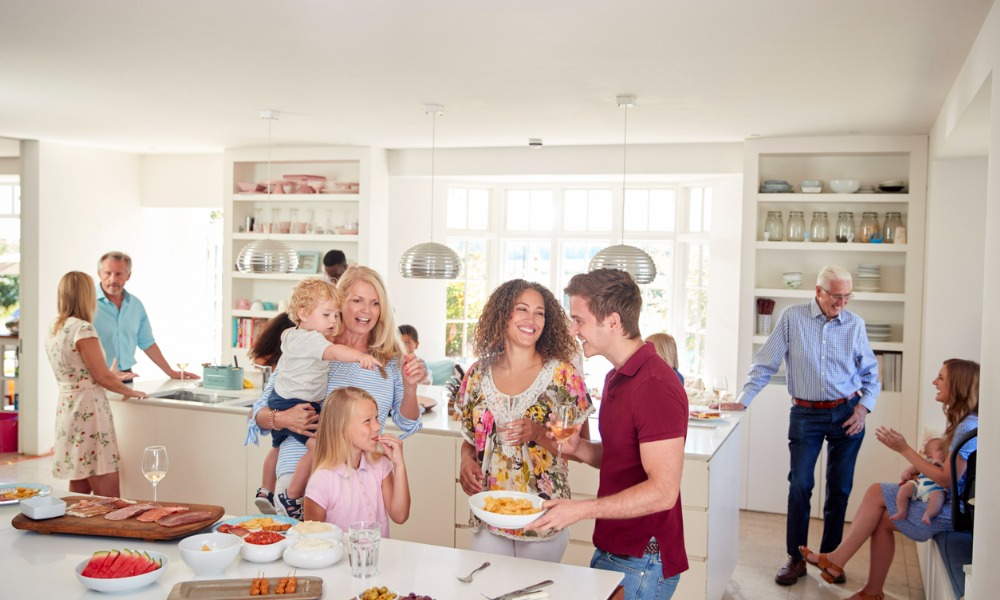The pros and cons of multi-generational living

With rising mortgage rates and rental prices in Australia becoming unaffordable for many, multi-generational living has increasingly become the only option. You should know, however, that it is not uncommon in cultures around the world. Beyond the financial benefits, multi-generational living can also limit social isolation among young adults and promote healthy aging among the elderly. But there are also pitfalls. Here is what you need to know about multi-generational living.
The growing multi-generational living trend
Multi-generational living is when multiple generations of people live in the same house, such as adult children living at home with their parents or grandparents or great grandparents living under the same roof as their adult children. Calling multi-generational living a trend, however, may be a little misleading, since it is considered a traditional way of life in many cultures. In Italy, for example, over 65% of people between the ages of 18 and 34 live at home with their parents, according to Eurostat. Since the bond between parents and child is considered so valuable, many young adults live with their parents in the Middle East and Africa, as well, especially until marriageable age.
Aside from tradition, there is also a financial incentive for these living arrangements. In Hong Kong, for instance, over 76% of people between the ages of 18 and 35 live at home with their parents in part because housing prices are so high. In Australia, the rise in multi-generational living is also out of financial necessity. Current economic conditions demand that more than one person per household work full-time, with the coronavirus pandemic only adding to the pressure, not only in Australia but around the world. But even in Australia, multi-generational living was on the rise pre-pandemic due to immigration trends, especially in major centres such as Sydney and Melbourne.
What are the factors that influenced multi-generational living in Australia?
Data from the US and the UK suggest the global financial crisis has been a major factor that influenced multi-generational living in those countries. In the US, the standard growth rate is roughly 1.5%. That number spiked to 3% during the global financial crisis, before decreasing to more normal levels at 1.5%. In Australia, the Australian Bureau of Statistics provided data to the ABC showing a slight rise in homes containing three generations, from 275,000 in 2016 to 335,000 in 2021.
And Australian households where two generations of adults lived under the same roof showed even more growth. Financial security for both young people and the elderly was cited as a major influencer in these decisions, while family connection was cited as the major benefit.
The benefits and pitfalls of multi-generational living
While multi-generational living in Australia is relatively new compared to other cultures, there are many benefits. Some of these include minimising segregation, feelings of social isolation, and stress. It also encourages general wellbeing and social connections. Each of these benefits has become especially important throughout the COVID-19 pandemic.
Multi-generational living benefits older generations living with their children and grandchildren by limiting social isolation and promoting healthy aging. Compared to those living in social isolation, older Australians who live social lives are actually healthier physically and mentally. Since it becomes increasingly difficult to remain socially active as we grow older, this presents a major societal challenge. Without even having to leave the house or access a home visiting program, multi-generational living provides older people with daily social interactions.
This living arrangement also benefits young adults and adolescents, who often experience similar problems due to isolation. Feelings of isolation tend to spike in youth, level off throughout middle age, and spike again in old age. That means both parties benefit when paired together in the same household.
It goes without saying, as well, that another major benefit to multi-generational living is financial, both for young adults and for the elderly. For the elderly, it can mitigate the costs that come with an in-home assistance program, care facilities, and unnecessary visits to the hospital. Young adults benefit financially for the simple reason that it is a better alternative to the average costs of rent in Australia.
There are, however, pitfalls to multi-generational living. While the pitfalls are usually more about lifestyle differences and are often unique to every family dynamic, the most common is the loss of privacy, especially for young adults. In this situation, it is fairly common for there to be disagreements that, in the extreme, can lead to legal complications.



